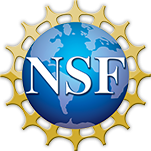Deep-sea hydrothermal vents, first discovered in 1977, are poster child ecosystems where microbial chemosynthesis rather than photosynthesis is the primary source of organic carbon. Significant gaps remain in our understanding of the underlying microbiology and biogeochemistry of these fascinating ecosystems. Missing are the identification of specific microorganisms mediating critical reactions in various geothermal systems, metabolic pathways used by the microbes, rates of the catalyzed reactions, amounts of organic carbon being produced, and the larger role of these ecosystems in global biogeochemical cycles. To fill these gaps, the investigators will conduct a 3-year interdisciplinary, international hypothesis-driven research program to understand microbial processes and their quantitative importance at deep-sea vents. Specifically, the investigators will address the following objectives: 1. Determine key relationships between the taxonomic, genetic and functional diversity, as well as the mechanisms of energy and carbon transfer, in deep-sea hydrothermal vent microbial communities. 2. Identify the predominant metabolic pathways and thus the main energy sources driving chemoautotrophic production in high and low temperature diffuse flow vents. 3. Determine energy conservation efficiency and rates of aerobic and anaerobic chemosynthetic primary productivity in high and low temperature diffuse flow vents. 4. Determine gene expression patterns in diffuse-flow vent microbial communities during attachment to substrates and the development of biofilms.
Integration: To address these objectives and to characterize the complexity of microbially-catalyzed processes at deep-sea vents at a qualitatively new level, we will pursue an integrated approach that couples an assessment of taxonomic diversity using cultivation-dependent and -independent approaches with methodologies that address genetic diversity, including a) metagenomics (genetic potential and diversity of community), b) single cell genomics (genetic potential and diversity of uncultured single cells), c) meta-transcriptomics and -proteomics (identification and function of active community members, realized potential of the community). To assess function and response to the environment, these approaches will be combined with 1) measurement of in situ rates of chemoautotrophic production, 2) geochemical characterization of microbial habitats, and 3) shipboard incubations under simulated in situ conditions (hypothesis testing under controlled physicochemical conditions). Network approaches and mathematical simulation will be used to reconstruct the metabolic network of the natural communities. A 3-day long project meeting towards the end of the second year will take place in Woods Hole. This Data Integration and Synthesis meeting will allow for progress reports and presentations from each PI, postdoc, and/or student, with the aim of synthesizing data generated to facilitate the preparation of manuscripts.
Intellectual Merit. Combining the community expression profile with diversity and metagenomic analyses as well as process and habitat characterization will be unique to hydrothermal vent microbiology. The approach will provide new insights into the functioning of deep-sea vent microbial communities and the constraints regulating the interactions between the microbes and their abiotic and biotic environment, ultimately enabling us to put these systems into a quantitative framework and thus a larger global context.
Broader Impacts. This is an interdisciplinary and collaborative effort between 4 US and 4 foreign institutions, creating unique opportunities for networking and fostering international collaborations. This will also benefit the involved students (2 graduate, several undergraduate) and 2 postdoctoral associates. This project will directly contribute to many educational and public outreach activities of the involved PIs, including the WHOI Dive & Discover program; single cell genomics workshops and Cafe Scientifique (Bigelow); REU (WHOI, Bigelow, CIW); COSEE and RIOS (Rutgers), and others. The proposed research fits with the focus of a number of multidisciplinary and international initiatives, in which PIs are active members (SCOR working group on Hydrothermal energy and the ocean carbon cycle, http://www.scorint. org/Working_Groups/wg135.htm; Deep Carbon Observatory at CIW, https://dco.gl.ciw.edu/; Global Biogeochemical Flux (GBF) component of the Ocean Observatories Initiative (OOI), http://www.whoi.edu/GBF-OOI/page.do?pid=41475)

